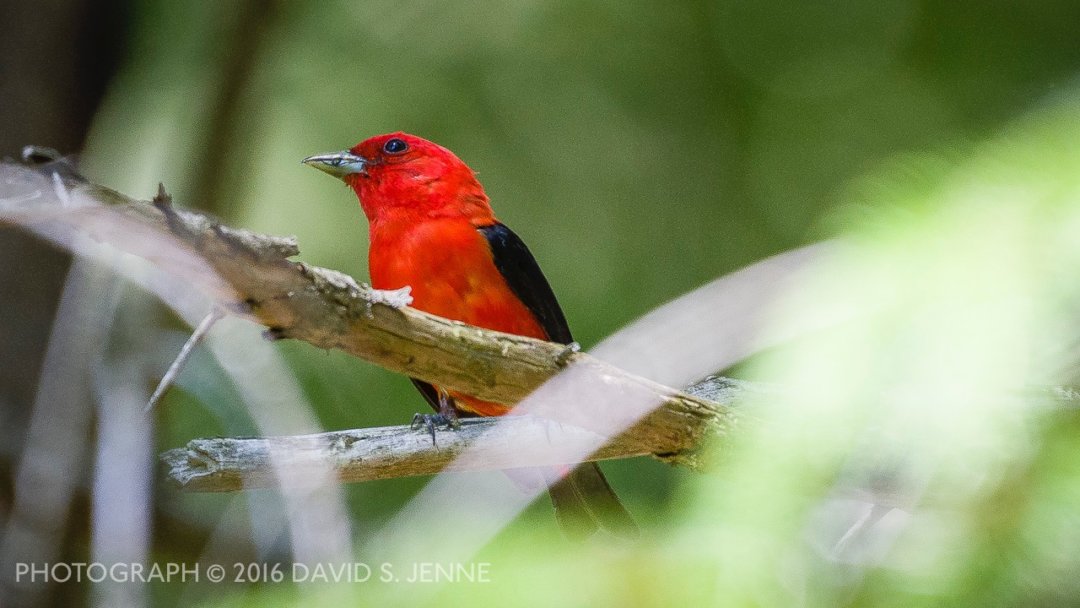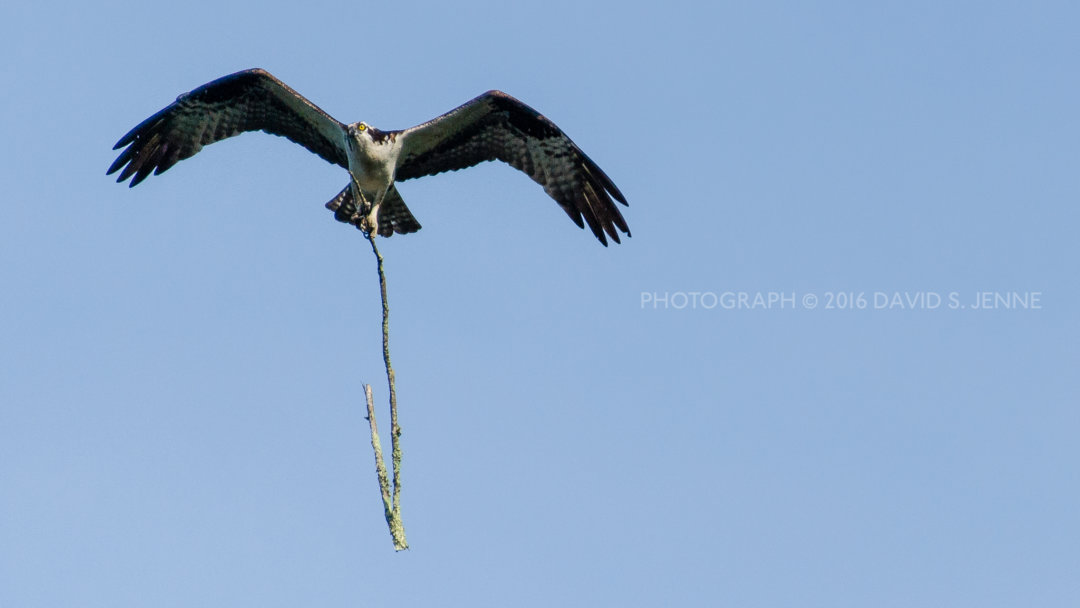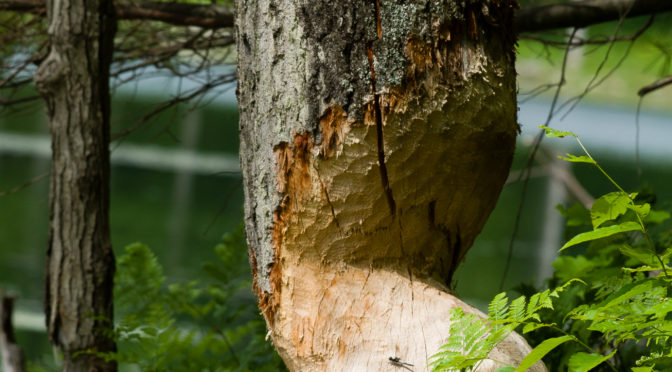By Tom Estill
If I had to describe in one word the summer of 2016, that word would be-DRY! And that feeling is supported by data from the Climatological Report issued by the National Weather Service which states that rainfall in the Burlington area so far this year is 6.5 inches below normal. The effects on the wildlife have been readily observed. I haven’t seen but a few Wood Frogs hopping through the forest, and I usually see dozens throughout the summer months. The few times it did rain, a few days later the forest floor would be covered with numerous species of mushrooms of various colors including, orange, red, yellow, purple, white, beige, brown, and green. It was as if the mushrooms knew they would have but a few opportunities to produce their reproductive structures, and took advantage of those few heavy rains and moist soil to do so. And I had never seen Rocky Pond lose so much water due to evaporation. The creek runoff was just not there to offset the evaporation loss.

On the first day of summer I was treated to the beautiful call of the summer tanager on Crusher Road, a call I would hear for weeks in that area. Summer tanagers did very well this summer. They were heard on a regular basis on Crusher Road, near trail marker 24 on the Carriage Trail, and in the area between Rocky and Muddy Ponds. This was definitely the best year yet for nesting scarlet tanagers. This time of year, an early morning stroll on one of the Pine Hill Park trails would have you hearing scarlet tanagers, pileated woodpeckers, yellow-bellied sapsuckers, hermit thrushes, ovenbirds, Eastern peewees, American redstarts, robins, northern flickers, yellowthroats, veery, catbird, tufted titmouse, wood thrushes, crows, blue jays, red-eyed vireos, white-breasted nuthatches, yellow-breasted vireos, and black-capped chickadees.
Near the ponds you would likely hear mourning doves, the call of osprey, belted kingfishers, song sparrows, and the occasional calls of great blue herons. New flowers were starting to appear including thimble weed, whorled loosestrife, northern bedstraw, yellow wood sorrel, partridge berry, rough-fruited cinquefoil, hop clover, cowwheat, and common milkweed. Butterflies included Eastern tiger swallowtail, white admiral, and red admiral, Easterntailed blue, cabbage butterfly, and great spangled fritillary.
The chestnut trees are doing quite well. There are now 2 different populations of American chestnuts growing at Pine Hill Park. They are marked with the red flags which you may see on certain trails, especially above the quarry on Crusher Rd. They come from populations of wild American chestnuts which have been producing nuts for decades, and which MAY be naturally immune to the Chestnut Blight Fungus. These stands are located in Georgia and Wisconsin.
During the last week of June, I saw schools of hundreds of tiny horned pout fish at Rocky Pond, while along the shores you could see and still hear bullfrogs, green frogs and gray tree frogs. Barred owls have also done very well this summer at Pine Hill Park.
Owls were either heard or seen at numerous places in the park, more so than in previous summers. You’re more than likely to hear them “hooting” at Rocky Pond if you go there at dusk. This time of year, new flowers are replacing those which had bloomed a week or two before and are now gone. At the end of June, purple-flowering raspberry, heal-all, common mullein, shinleaf pyrola, and black-eyed Susan’s were new blooms.
The first week of July found yellowthroats nesting on Crusher Rd. as they have done in the past and blueberries ripe for the picking. New blooms included tick trefoil, meadowsweet, white avens, deptford pink, garden loosestrife, St. John’s-Wort and Indian Pipe. The Indian Pipes seemed to all emerge at the same time-the day after a heavy rain. Red efts, of course, is always a common sight on the trails after a good rain. That rain also brought out one of the only times I saw wood frogs in the forest this summer. This is the time of the year where you’re also likely to see the beautiful, iridescent blue-colored tiger beetle on most of the sunny trails. But be careful, they can give a nasty bite if handled.
In mid-July you could see adult and young wood ducks on Muddy Pond, cottontail rabbits on Crusher Rd., agrimony, hedge bindweed, white sweet clover, queen Anne’s lace, goldenrod and helleborine all in flower, baby painted turtles and black water snakes at Rocky Pond, and white-andblack and chestnut-sided warblers. On July 12th, while sitting at Rocky Pond very early in the morning, I heard a black bear huffing and growling on the north side of the pond. I believe it was calling its young. Towards the end of July, wood nymph butterflies were becoming a common sight on my walks, evening primrose and touch-me-not was flowering, and the forest was becoming increasingly quiet. A male AND female indigo bunting was seen on the carriage trail, and by the way they were behaving, I’m sure they were close to their nest. I’ll be watching and hoping for their return next year.

A pair of osprey at Muddy Pond were being seen on a regular basis. Though they built a temporary nest on the top of one of the electrical wire poles, they would never spend any appreciable amount of time on that nest. Inevitably, they would take flight in the direction of Proctor after spending a few hours at the pond. But, I would not be surprised if they built an active nest at the pond next spring. They have their privacy, food and water at Muddy Pond, and have spent a lot of time there this summer.
There are now 2 active beaver dens on Rocky Pond. Beaver have been seen leaving and entering both dens. The Rocky Pond beaver dam was removed due to the danger of it collapsing and then flooding Muddy Pond which could then pose a danger to the Muddy Pond dam which protects the golf course from flooding. But, the beaver continue to repair/rebuild the removed dam, and will continue to do so as long as they’re in their dens on Rocky Pond. The Rocky Pond beavers are now busy storing their winter supply of stems and branches just outside their dens, preparing for the long winter ahead.
At the end of July, a rufous-sided (Eastern) towhee could be heard singing on crusher road, and near the powerlines on the Carriage trail, cedar waxwings were becoming a more common sight, acorns started falling from oak trees, satyr butterflies were seen for the first time, Joe-pye-weed was blooming, and the forest was becoming so quiet that on some walks I heard or saw only a handful of birds.
The beginning of August saw silver spotted skippers, pearl crescent and white admiral butterflies, American goldfinch, broad-winged hawks, black-throated warblers, and a double crested cormorant at Rocky Pond, and the first loose associations of black-capped chickadees, tufted titmouse, and whitethroated nuthatches. Black berries were ripe for the picking. While waving a red flag in my face, attempting to swipe away mosquitoes, a ruby-throated hummingbird flew up to the flag and hovered a few seconds before realizing it wasn’t a flower, and then flew away. Mid-August saw the first appearance of ringlet butterflies, the Eastern peewee changing its song to its late summer “tur-ee” song, and my first sight of a ring-necked snake. A few weeks later, I would see my first milk snake in the park. I can’t help but wonder if the lack of precipitation had something to do with the increased number of snake sightings I observed this summer.
On Sept. 1st, I took a short hike along middle Giorgetti Trail and didn’t hear or see a single bird. The first week of Sept. saw turtlehead, and bottle gentian flowering, clouded sulfur butterflies, and acorns continuing to drop. This summer has been a bumper crop for acorns, and squirrels and chipmunks have been observed storing the nuts throughout late summer. Mid-September found some trees (mostly birches) beginning to lose their leaves, the first pair of Canada geese to arrive at Muddy Pond during their fall migration, and gray tree frogs croaking to one another.
On the last day of summer I walked up to Muddy Pond and saw gray squirrels and chipmunks collecting acorns, I was surprised to see 3 hermit thrushes (which I hadn’t seen for weeks), and numerous robins flying through the forest on their migration south, and 9 Canada geese and 3 female wood ducks at Muddy Pond. I’m always amazed at how quiet the forest has become. Though I can see the fall changes in the plants and animals, it just doesn’t FEEL like fall yet. Where’s the cool north wind signaling the arrival of fall? Enjoy your walks in the park, but please stay on the marked trails. AND, make sure your try some of the Redfield Trails-beautiful, peaceful, and lush trails which take you through the thick of it all.

